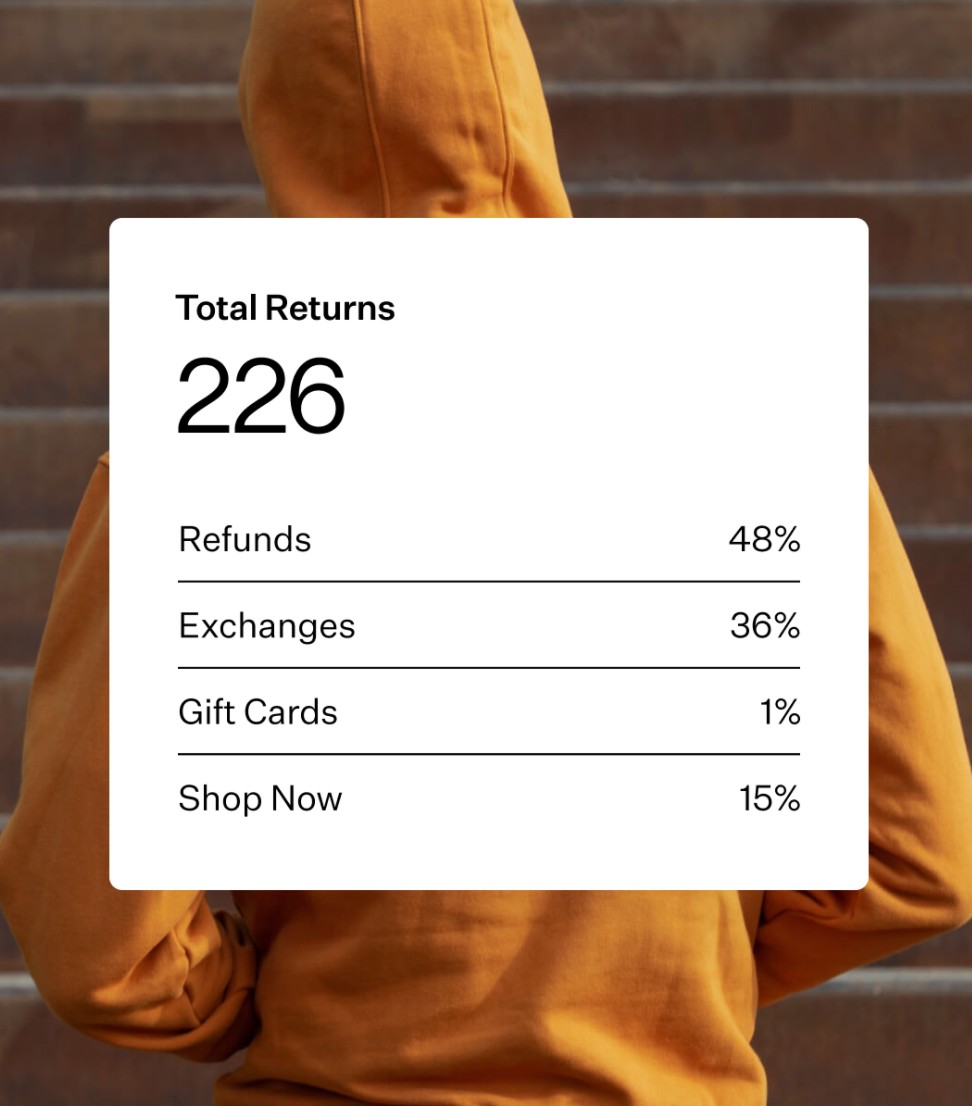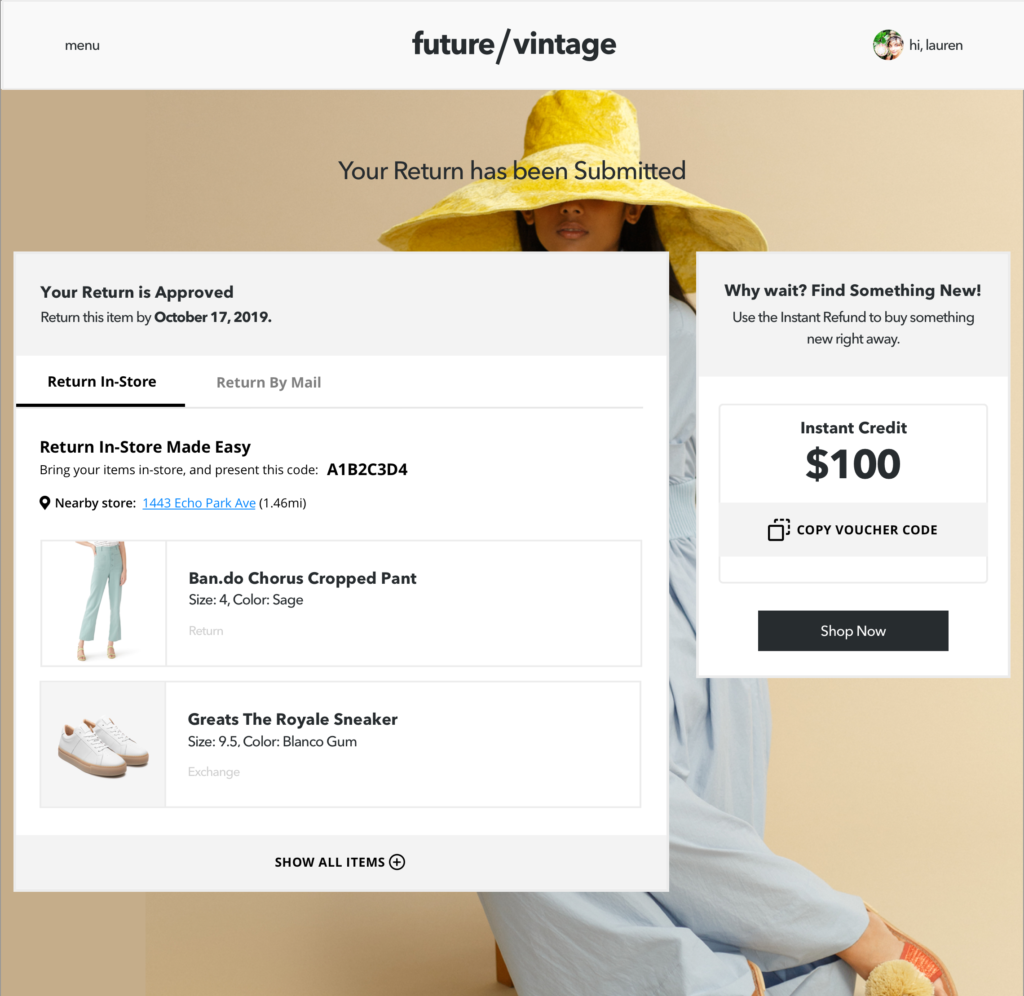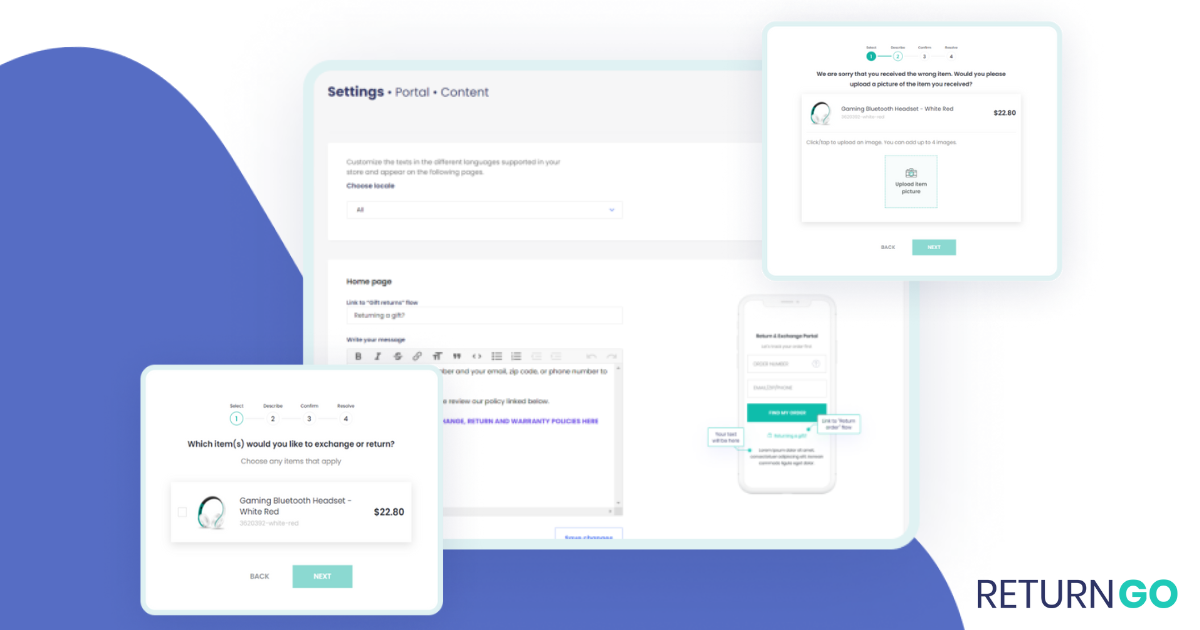
August 16, 2022
Four Capabilities To Look for When Choosing a Returns Management Solution
Tags:

This blog post was originally published by Deliverr, which is now Flexport. The content has been adjusted to fit the Flexport brand voice and tone, but all other information remains unchanged. With the merging of Deliverr’s services (DTC fulfillment, B2B distribution, and Last Mile delivery) into Flexport’s existing international freight and technology services, we’re now able to provide merchants with true end-to-end logistics solutions spanning from the factory floor to the customer’s door.
The BFCM season will be here before we know it. Your online store has grown exponentially, which means so will your customer returns after the holiday rush. In today’s eCommerce market 20% of purchases are returned (compared to only 9% of those in-store). The plague of increasing eCommerce return rates—coupled with consumer expectations for a headache-free returns process—can overwhelm your business with complexity, waste, and costs:
- The average retailer incurs $166 million in merchandise returns for every $1 billion in sales made
- Processing the average return costs companies 59% of the original item price
- U.S. companies spend an average of $50 billion on returns each year
- 10 billion pounds of returned merchandise end up as landfill waste (despite only roughly 20% being beyond repair)
Don’t be another statistic. How you manage your customer returns can make or break your business during commerce's biggest event of the year. Having the right Returns Management Solution in place makes all the difference—for your margins, environmental impact, and sanity.
What Is a Returns Management Solution (Rms)?
A Returns Management Solution (RMS) is a tool/software that coordinates and simplifies every aspect of the returns process from the time a customer requests a return label, to processing and restocking. Most RMS tools can be integrated in just a few weeks with the systems and tools you’re already using.
More importantly, they can positively impact costs, improve your customer experience, and reduce the complexities of handling returns in-house. Inventory control and insights all in one place? Yes, please!
Choosing a Returns Management Solution: 4 Capabilities To Look For
There’s no ‘one size fits all’ standard when it comes to Returns Management Solutions. For example, you might need a solution with some combination of B2B returns, repair management, online and in-store returns, order tracking, or refunds.
While some Returns Management Solutions allow you to manage only a slice of the returns pie, others provide you with the ingredients to build an end-to-end returns ecosystem.
No matter your needs, there are four essential capabilities you should look for in an RMS:
1. Centralized Inventory Control and Shipping Visibility
Working with multiple vendors to manage and process returns is inefficient. Simplifying your process means having a single partner and greater control of your returned inventory under one roof. A Returns Management Solution should integrate with your warehouse inventory or your third-party fulfillment center to track returns against your inventory, allowing you to:
- Initiate returns across multiple eCommerce channels
- Process returns quickly and efficiently
- Inspect returned merchandise and repair damages
- Track the status of returned orders
Flexport integrates directly with Returns Management Solutions, including ReturnGO, to optimize your reverse logistics and ensure quick and efficient returns. No need to change your current customer experience or support process.
Centralizing these processes eliminates the need for separate shipping and tracking systems which in return (no pun intended) saves you time and money.
2. Tailored and Detailed Reporting
Piggy-backing off of inventory insights, a reliable Returns Management Solution should have data and analytics available at your fingertips to help you make informed business decisions.
Take Loop for example; it offers meaningful metrics at a glance through a real-time feedback loop so your team can “identify and solve product issues, clarify marketing messages, and eliminate the risk of guessing what to do next.”

Example of Return Management Solution Loop’s reporting.
Want to know which item categories are returned most frequently? Or the reason why a customer decided to initiate a return? These actionable insights help you identify product performance, make processes more efficient, and improve your customer experience.
You can also connect Loop to your Flexport account to see transparent returns processing updates, outcomes of inspection, and customer feedback in one place to help you prevent future returns.
3. Customizable Returns Policies
96% of shoppers become repeat customers when a brand offers an easy and flexible returns policy. While customer experience should be your main focus (more on this in point #3,) it’s important that your return policy is also well-suited for your growth stage, revenue trajectory, and product category.
For instance, a small business usually can’t afford to cover the cost of returns the way a more established brand can. You shouldn’t have to offer free returns just because it’s what customers expect if your margins will suffer as a result.
Defining your own returns policy is one of the major benefits of using an RMS. Some common details available to customize within ReturnGO’s platform include:
- Which items are eligible
- The return time frame
- Any additional fees
- Types of returns offered (exchanges, refunds, store credit)
Loop also supports complex return policies and unique customer journeys by letting merchants set conditions and resulting actions, such as:
- Giving extra perks (like free shipping) to first-time and loyal customers
- Telling customers to simply keep instead of returning low-cost items that aren’t worth the cost to ship back
- Routing damaged items to a donation or refurbishment center
Moreover, look for a Returns Management Solution that offers a variety of alternatives to the default ‘refund to the original payment’ method. These can be as simple as offering an exchange (a strategy Loop implements to encourage revenue retention) or as flexible as Returnly’s instant credit to shop across your website. This level of customization helps maximize profits and generate lifetime value (LTV).

Example of Return Management Solution Returnly’s instant credit program.
4. Hassle-Free Customer Experience
Your customers are the heart of your business. The best Returns Management Solutions in market have CX ingrained in their DNA to ensure it’s just as easy to make a return as it is to place an order.
Whether it be a branded return portal that seamlessly blends with your store’s design and layout, or a self-service portal through which your customers can request to return or exchange products, reducing as much friction as possible for your customers will garner trust and build loyalty. Take Loop for example: it prides itself on making exchanges just as easy as purchases, which in turn increases the likelihood of revenue retention and repeat purchasers.
Another RMS, ReturnGO, enables you to fully customize your return portal layout, logo, colors, design, and labels to fit your brand. This ensures customers feel connected to your brand at every step of the purchase process and creates a positive association with your store.

Example of Return Management Solution ReturnGO’s branded portal.
Simplify Your BFCM Returns Operations With Flexport
While Returns Management Solutions enable your business to initiate returns, Flexport ensures that your inventory is processed, restocked, and back in the hands of your customers hassle-free.
When combined with an RMS like Returnly, ReturnGO, or Loop, Flexport Returns provides a simplified, end-to-end reverse logistics solution for all. Get in touch with our team to learn more about how to get started today.
The contents of this blog are made available for informational purposes only and should not be relied upon for any legal, business, or financial decisions. We do not guarantee, represent, or warrant the accuracy or reliability of any of the contents of this blog because they are based on Flexport’s current beliefs, expectations, and assumptions, about which there can be no assurance due to various anticipated and unanticipated events that may occur. This blog has been prepared to the best of Flexport’s knowledge and research; however, the information presented in this blog herein may not reflect the most current regulatory or industry developments. Neither Flexport nor its advisors or affiliates shall be liable for any losses that arise in any way due to the reliance on the contents contained in this blog.
About the Author





